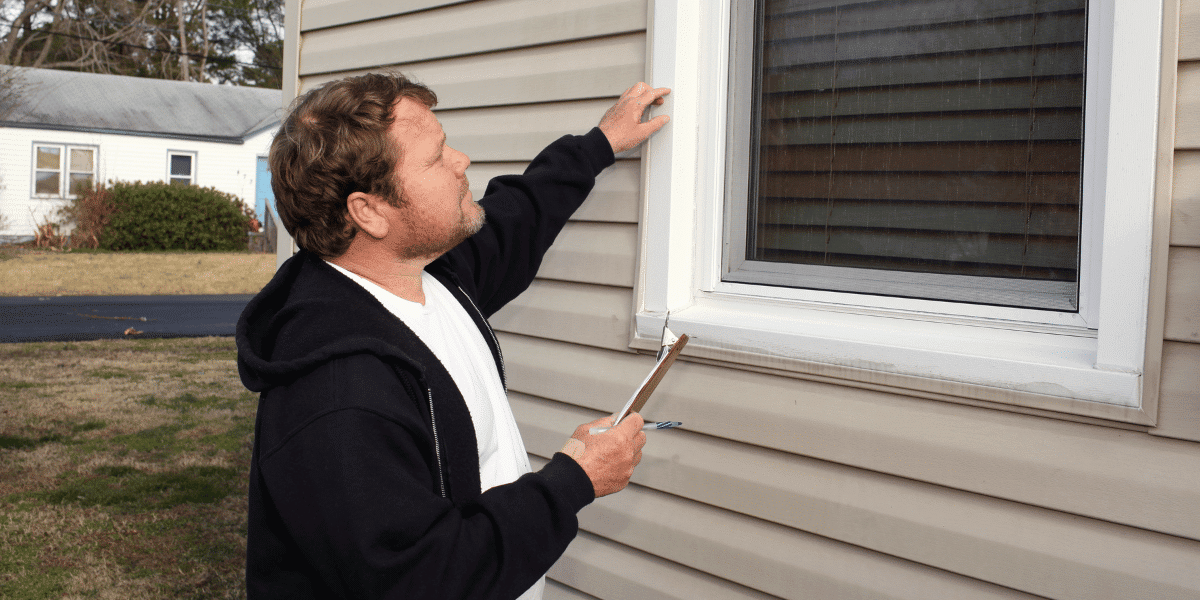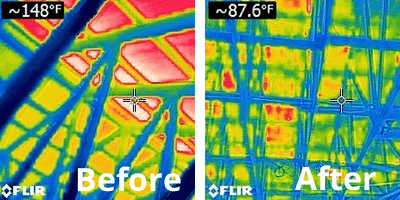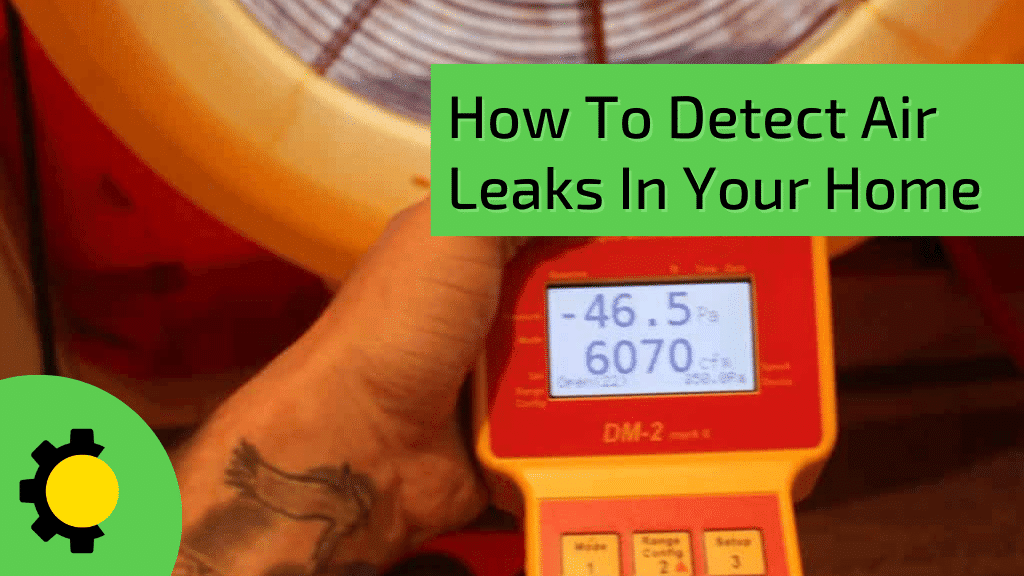Air leaks can make your home uncomfortable, can be frustrating, and may cost you money. Getting a handle on the amount of air that leaks in and out of your home cuts heating and cooling costs. And, improve the comfort, durability, and even the air quality of your living space.
According to EnergyStar.gov, you can save as much as 15% on your energy bills each year by properly sealing and insulating your home.
What’s an air leak?
When outside air flows in and conditioned air flows out through cracks and openings, you have an air leakage issue.
And if you’re thinking, “Hey, that’s great! It means my house has good ventilation!” — THINK AGAIN. Just wait until you receive your energy bills and that drafty home won’t seem so great.
The Department of Energy cautions against relying on air leakage for ventilation. This type of air exchange is uncontrolled.
The result will likely be too much air coming in when the temperatures are colder and windier. When the temperatures rise and the winds die down, there won’t be enough air. This typically adds up to poor indoor air quality.
Instead, the DOE recommends reducing air leakage as much as possible, and providing controlled ventilation.
Common sources of air leaks
If you have been living in your house for some time, you may be familiar with certain air leaks due to experiencing them firsthand. While doors and windows are typical sources, there could be other culprits as well.
EnergyStar.gov reveals that several other hidden sources in your home may be causing air leaks. These can include:
- Knee walls
- Attic hatches
- Wiring holes and electrical outlets
- Plumbing vents
- Recessed lights and the soffits around them
- Furnace flues or ducts
- Basement rim joists where the foundation and wood framing meet

Perform a visual inspection
To begin, the Department of Energy recommends conducting a thorough visual inspection both inside and outside of your home. Check for gaps and cracks at common points of air leakage, such as knee walls, dryer vents, outdoor faucets, attic hatches, and sill plates.
Pay close attention to outer walls, doors, and other openings, and make a record of any cracks, gaps, or other openings that you discover. This will enable you to return and properly air-seal these areas later on.
To supplement your visual inspection, you can also conduct a simple test. The DOE provides several methods, including the following steps for a do-it-yourself smoke test:
- Choose a cool and windy day to perform the test, and turn off any appliances that may cause air disturbances or have exhaust fans. This includes the furnace, water heater, clothes dryer, and bathroom fans.
- Make sure to shut all windows, exterior doors, and fireplace flues before proceeding with the test.
- Take a stick of incense and light it carefully. Hold the incense near any possible points of air leakage, as listed in the common points of air leakage above.
- Observe the smoke from the incense. If it moves unsteadily back and forth, or if it gets sucked out of the room or blown into it, this indicates an air leak.
Take control of air leakage in your home
According to the DOE, you can also seek the assistance of a professional to identify air leaks by scheduling a Home Energy Audit. This process typically involves a blower door test where a powerful fan is installed onto the frame of an exterior door.
The fan removes air from the house, causing the pressure inside to decrease, which allows higher outside air pressure to flow in through cracks and openings. Professionals may use a smoke pencil, similar to the one outlined above, to help locate leaks. In addition to identifying air leaks, a blower door test can also evaluate the overall air tightness of your home.
The professionals at Sunlight Contractors will help you show air leaks who’s boss and how to solve the drafty home problem. Here’s how:

- They’ll perform a home energy audit, including a blower door test, to calculate the leakiness of your home and where your sealing or insulation needs are greatest.
- If your home is found to need additional ventilation, they’ll advise you to contact your HVAC contractor.
- If your home is not sufficiently tight, they’ll advise you about the best air sealing materials and techniques to optimize your home’s energy efficiency, safety, and air quality. Since spray polyurethane foam, when conscientiously and expertly applied, is best insulation at reducing air leakage, Sunlight will specifically explain where open or closed cell spray foam might benefit you most.
- Once Sunlight completes installation of spray polyurethane foam, they’ll do a second blower door test, measure the total air volume in your living space, perform ASHRAE 62.2 testing and email you a report on your home’s air exchange rate per hour (ACH).
Why you should choose Sunlight Contractors
When you trust Sunlight Contractors to insulate your home with spray polyurethane foam, you’ll get top-notch service to improve your comfort and energy-savings, and the important information that you need about your home’s air quality.
When selecting the right company to fix your air leaks, it’s important to avoid inexperienced and unlicensed contractors. Sunlight’s installers are certified by external, professional bodies such as the LSLBC, SPFA and BPI.
Furthermore, owner Corey Yates, is a Master Spray Foam Installer with extensive field experience and certification by the Spray Polyurethane Foam Alliance. To ensure a high-quality job, use the links provided in this post to investigate the qualifications of prospective contractors and compare them to Sunlight Contractors.
Sunlight Contractors will help you say goodbye and good riddance to air leaks in your house!

